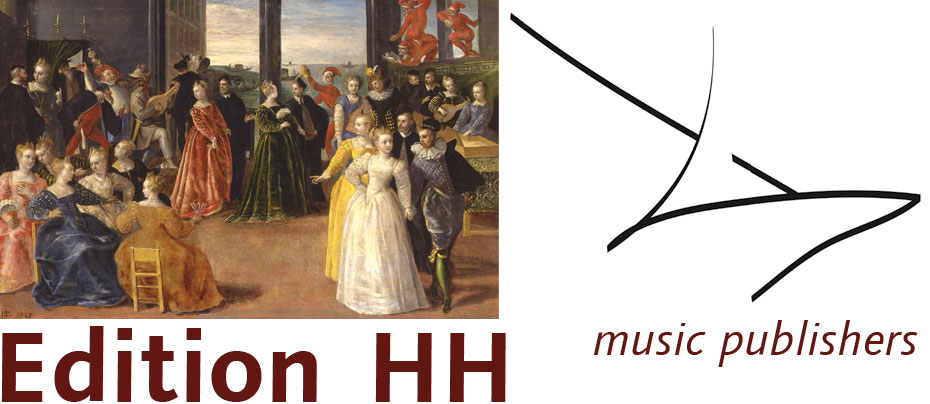
The Consort
Tom Cooper
Summer 2024
Wolfgang Amadeus Mozart
Symphony No.39 in E flat major,
K.543
arranged for solo piano by Johann
Nepomuk Hummel
ed SARAH JENNER
Edition HH 566.
This edition of a transcription by Hummel is another very welcome addition to the extensive set of his arrangements of Mozart’s concertos and symphonies published by Edition HH. Hummel arranged them around 1823 and they were first published in London by Chappell & Co. Sarah Jenner has undertaken the editorship of the symphonies, as she has with Haydn’s symphonies (transcribed by Carl Stegmann) published by the same press, and the results are as fine as was the case with Hummel’s transcriptions of Mozart’s ‘Linz’ Symphony K425 and the G minor Symphony K550 reviewed in last year’s edition of The Consort. As before, the text is very well laid out and easy to read.
Editorially the present edition retains Hummel’s articulation and dynamics. These sometimes differ from those observable in the orchestral parts (first published in 1797), for example in the final movement bars 54-61, where in the orchestral original the flute and bassoon play their answering figures in detached notes, but Hummel (probably to facilitate execution at speed) marks them to be played legato. Jenner also retains Hummel’s metronome markings. As Jenner remarks in her extensive notes (duplicated in all three of the copies of the symphonies so far reviewed), these ‘may be of interest to present-day performers of the orchestral versions of these symphonies’. While the Adagio introduction to the symphony is marked at crotchet = 60, a tempo frequently observed in modern performances, the other metronome markings are almost alarmingly fast, including a hurried-sounding quaver = 108 for the second movement Andante, a rushed dotted minim = 80 for the third movement Minuetto Allegretto, and a positively headlong crotchet = 152 for the Finale Allegro. Tastes do change, as performances of Mozart have shown abundantly over the last 60 years, but even by the standards of some speed-merchants of fairly recent years these markings are pretty brisk. It seems doubtful whether, even taking into account the light action of the instruments of the early 19th century compared with the deep key fall of modern pianos, these markings would have been within the capabilities of most amateur pianists of the time.
As Jenner notes, on a modern piano Hummel’s writing for the left hand can sound ‘muddy’, and she wisely suggests discretion on the part of the player when faced with dense chordal writing such as one encounters in bars 276-294 of the first movement. Jenner notes that contemporaries were also fully aware of the need to adapt the piano writing, and quotes from a review of Hummel’s transcriptions which appeared in The Harmonicon in 1823, in which the anonymous author comments that the arrangements show Hummel’s ‘perfect knowledge of the instrument, and his nice discrimination in selecting the most effective parts from the score, in those passages where the whole could not be taken. […] By a little prudent management, and the occasional omission of a note or two that may prove beyond the performer’s reach, it is very possible to facilitate their execution’.
The present transcription is perhaps not quite as successful at including or evoking the whole musical effect of the E flat major Symphony K543 as it was with the G minor Symphony K550 reviewed in these pages last year. This is particularly felt in the grand Adagio introduction to the symphony, where the brass fanfares and the solemn solo drum beats at the start are omitted in favour of the wind and string parts. This may be partly due to the difficulty of accommodating Mozart’s increased orchestra of flute, 2 clarinets, 2 bassoons, 2 horns, 2 trumpets, timpani and strings in the transcription – a good deal of the sonority is inevitably evened out. By comparison, the orchestra for the G minor Symphony, scored for flute, 2 oboes, 2 bassoons, 2 horns and strings seems better served in the piano arrangement.
This edition of Hummel’s arrangement of the great E flat major Symphony K543 is another fine example of the important genre of piano transcription which made so many masterpieces of the orchestral and operatic repertoire available to the rapidly growing number of amateur musicians of the time who were unable to hear them in their original form. As such, it is greatly to be treasured by anyone with an interest in the burgeoning piano repertoire of the 19th century.
We are grateful to the The Consort for permission to reproduce this review.